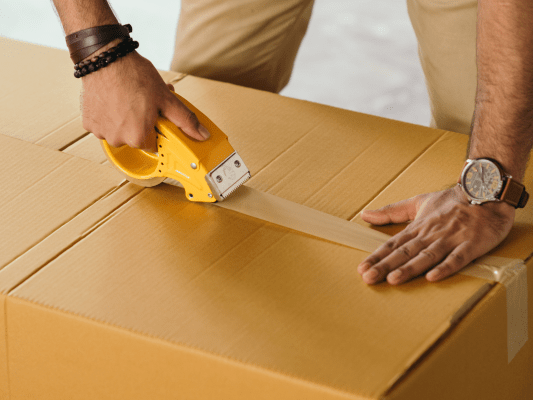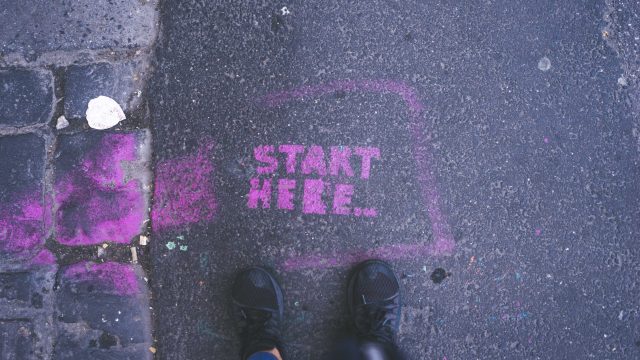If you run an Amazon FBA business, it’s a fact of life that you’re going to have to deal with returns at some point or another. No matter how hard you try, returns are unavoidable, and someone is always going to have changed their mind and want to return what they bought from you.

Although customers are well within their right to return a product, returns and refunds can be costly for you. If the item returned cannot be resold again because it is faulty or damaged, you could end up having to take the financial hit, which will end up spoiling your profit margin. This is especially true of FBA items where you as the seller have zero control over what happens to an item when Amazon receives it back. What’s more, Amazon prides itself on being customer-centric, and generally, they will side with the customer if they request a return.
Returns are unavoidable, but you should do what you can to try to avoid them. There will always be some reasons customers return products that you as a seller can’t prevent (such as someone just changing their mind), but there are many things you can do to keep your return rate as low as possible.
In this guide, we tell you everything you need to know about Amazon returns and how you can prevent them.
Understanding the Amazon returns process
So that we can start to understand ways to prevent Amazon returns, we first need to understand how the return process works. For the purposes of simplicity we’re just going to talk about FBA orders here – if you’re doing FBM, you have much more control over what you do with returns, including whether to charge restocking fees.
For most products Amazon will let customers request a full refund within 30-days of receiving their order. There are some exceptions to this with certain products getting a longer or shorter amount of time. For example, baby items have 90 days, but electronics only have 14.
After informing Amazon customer service that they’d like to return an item, providing they’re within the specified return window, Amazon will provide them with a prepaid shipping label or instructions to take the item to a dropoff point for it to be collected. Often, especially for lower value items, Amazon will refund the customer straight away. If the item isn’t scanned into an Amazon fulfillment center within thirty days, Amazon charges the customer again. This goes for returns as well as replacements – Amazon usually ships a replacement immediately but if the return item doesn’t arrive they get charged for the new one.
After Amazon has received the item they will inspect it. If it is in good condition and still sellable, i.e. the box hasn’t been opened or tampered with, they will put returned items back into your inventory and you can resell them. If the item is damaged or unsellable, they will either send the item back to you (at your cost) or dispose of it themselves. Unfortunately you have very little say in this and even if a customer has caused the damage themselves, you will often just have to accept that Amazon is going to refund them regardless of this.
There are several reasons Amazon considers as legitimate as part of their returns policy. These include:
- Faulty items that don’t or are defective due to manufacturing issues (damaged defective)
- Items that have been damaged during shipping (carrier damaged)
- If the item differs considerably from how it was described in the listing e.g. size or color
- If the item is of considerably different quality to its description
- Late delivery or delayed shipping
- Customers changing their mind
- If the item doesn’t match the needs of the customer
It’s a good idea that you learn the ins and outs of Amazon’s return policy so you know exactly what you should expect when handling returns.
What is an acceptable return rate?
For most categories Amazon sees a return rate of anywhere between 5% – 15% as being acceptable. There are other categories such as Jewelry and clothing where this can be higher, but this is because personal taste and preference plays a big part in whether a customer keeps an item or not.
If Amazon notices that you have a higher than normal return rate for a certain product, they will usually tell you about this. If you fail to take action to reduce your return rate after you’re warned, you run the risk of getting your account suspended or banned.
You can find your Amazon return rate in your seller central account by following these steps:
- Sign into your Amazon seller central account
- Go to the “Reports” tab and select “Fulfillment” from the drop-down menu
- Select “Customer Concessions”
- Click on “FBA Customer Returns”
- At this point you can select the time period you want to see your returns
- Press the “Generate Report” button
In the report that is generated you will be able to see your overall return rate as well as other useful information, such as problem products. This is really helpful as it will help you identify areas that you could improve on to lower your rate of return.
So now we understand how and why customers can return their items, let’s take a look to see what you can do to prevent it.
Tips for preventing Amazon returns
You can’t stop someone changing their mind, no matter how accurately you describe the product. Customers can be fickle – the phrase “buyer’s remorse” is something you should keep front of mind when thinking about returns. Perhaps the person bought the item on a whim and has now realized they can’t afford it. Perhaps they’ve found a similar or better item somewhere else and they want to buy that one instead.
However, if you find that customers are returning items and you’re consistently getting comments like “it’s bigger/smaller than I thought it was” or “it’s not the right color” – then this is entirely your fault as you aren’t setting the customers’ expectations properly at the time of purchase, and this is something you can absolutely do something about.
We can’t show you how to eliminate returns as this simply isn’t possible – but we can show you how to minimize them by following these steps.
Write an accurate product title
If your product title is inaccurate or misleading it’s likely you’ll get a higher rate of returns because the item doesn’t meet the customers expectations. Don’t try and trick customers buying your product with a misleading title. Yes, you might get a few more sales, but you’ll also get just as many returns, as well as some bad reviews alongside them.
Write a detailed product description
In a similar way to having an accurate product title, having an accurate product description is a great way to make sure customers know what they’re getting. You should consider including things like the materials the product is made with, how it is constructed, how big it is, where it can or can’t be used.
You should also make sure that you include at least 5 key bullet points about your product, which highlight the main features and benefits of the products. This helps customers quickly and easily find useful information that can help their decision making process.
All of these things will help because it will not only make it easier for customers to make a purchase, but it will also minimize your returns because they know what to expect when the product arrives.
Add accurate product dimensions
Make it specifically clear how big your product is to prevent customers from buying something that is too big or too small for their needs. This will mean they will know if the item will be right for them before they purchase it rather than finding out it is wrong after it’s delivered.
Specify any color variations
If your product comes in multiple colors, make sure you’re very clear in your product description and product details about what color the customer will be receiving. If you can’t tell this or it could be random, make sure this is abundantly clear as well. That way the customer won’t be surprised when.
Use lots of product imagery
The more images of your product you can include on your product page, the less likely it is you’ll get returns. Try and include pictures of your product being used so the customer can see how it works or looks in different settings allowing them to accurately judge the size and functionality of the item.
Helping customers visualize your product will help them understand if it is the right product for them before they buy it meaning they’re less likely to return it once it does arrive and find out its not right for them. A picture really is worth a thousand words, and good quality images will prevent returns for reasons that could have been avoided if the customer’s expectations were set properly when purchasing the item.
Answer customer questions quickly
If a customer asks a question about your product, it’s really important that you get back to them as soon as possible. Firstly, this might be a question that other potential customers want to know the answer to, but also you are helping them decide whether this is the right product or not. If you don’t or are slow to answer, the best case is that they don’t buy your product at all, but even worse they could buy it and then return it. So keep on top of those questions.
Use your customer reviews
You should frequently check reviews customers are leaving about your products and see what they are saying about them. If you’ve had a spell of negative or mediocre reviews on a product it could suggest that there is something wrong with the way you described it or the product itself. These customers might not necessarily have returned the product, but it’s likely that some other customers might have for the same reasons. You shouldn’t necessarily see reviews as a criticism, more a way you can improve the service and products you offer your client base.
Price your products correctly
If your customer finds a similar product elsewhere for cheaper, it’s more likely that they’ll try and return yours. Because of this, it’s really important that you make sure your pricing is competitive whilst also being profitable.
One of the easiest ways of doing this is by using a tool like SourceMogul. SourceMogul is an online arbitrage tool which allows you to source products from major retailers like Target and Costco, which you can then resell for a profit on Amazon. It also allows you to compare the prices of other similar products on Amazon, so you know how much you can sell them for whilst still remaining competitive and making a profit at the same time.
You can sign up for a free 7-day trial of SourceMogul here.
In conclusion
If you’re running an Amazon FBA business, then returns come part and parcel as part of your business. However, having too many returns can impact your business. Returns can lead to poor customer reviews and even having your seller account frozen or canceled.
It’s important that you make sure you correctly optimize your product listings by accurately describing your product, putting correct dimensions and colors, and using a range of imagery. This will ensure your customers know what product they are buying, so they don’t need to return it after it’s been delivered. You should also nurture your customer base by answering questions and queries about your product before they order them.
If you do all of this you should see a decrease in your overall return rate and a higher customer satisfaction level.
FAQ’s about Amazon returns
What is the average return rate on Amazon?
For most products a return rate of 5%-15% is seen as acceptable by Amazon. Anything higher than that can be an indication that something is not right about your product or the way it is described. You should take a look over your product listings and customer reviews about that product to see if you can pinpoint what is wrong.
Does Amazon handle FBA returns?
Yes, one of the benefits of using the FBA program is that Amazon takes responsibility for all the customer service and returns on your behalf. After a customer has returned a product they will inspect it for damage and return it to stock if it is in good condition, or eventually send it back to you or dispose of it if damaged. Amazon will also handle the reimbursement of the customer.
Can an Amazon FBA seller refuse a return?
Unfortunately not. As an FBA seller you have no control over whether a return is accepted or not because all customer service and the returns process is handled by Amazon itself. There may be some cases where Amazon may refuse a return, but unless the return falls outside or the returns window for that product, it will usually go through.
More strategy
-

6 steps to becoming an Amazon seller. No experience needed.
Becoming a successful Amazon seller is easy - the Amazon brand and logo represents…
-

Top tips for success from a new Amazon seller
We've compiled a list of the top tips for new sellers, gathered from a…
-

How to get ungated on Amazon – your guide to Amazon restricted categories
If you’re looking to expand your online arbitrage business, you might find yourself tempted…
-

How to prepare for Amazon Q4 trading
Every year the holiday season seems to come around a little earlier. As an…




